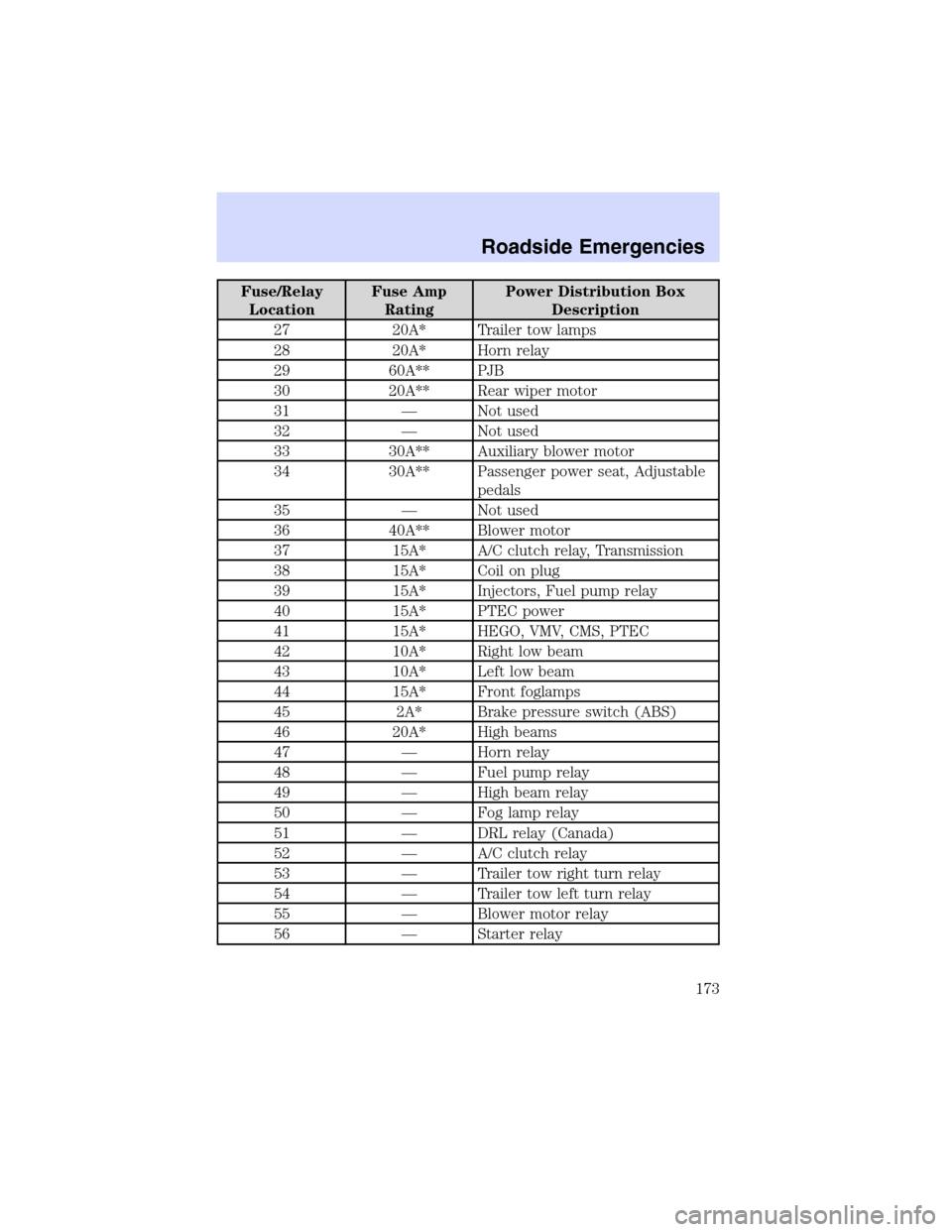starter Mercury Mountaineer 2003 Owner's Manuals
[x] Cancel search | Manufacturer: MERCURY, Model Year: 2003, Model line: Mountaineer, Model: Mercury Mountaineer 2003Pages: 264, PDF Size: 2.5 MB
Page 144 of 264

Starting the engine
1. Turn the key to 3 (ON) without
turning the key to 4 (START). If
there is difficulty in turning the key,
rotate the steering wheel until the
key turns freely. This condition may
occur when:
•the front wheels are turned
•a front wheel is against the curb
Turn the key to 4 (START), then
release the key as soon as the engine starts. Excessive cranking could
damage the starter.
Note:If the engine does not start within five seconds on the first try,
turn the key to 1 (OFF/LOCK), wait 10 seconds and try again.
Cold weather starting (flexible fuel vehicles only)
As the outside temperature approaches freezing, ethanol fuel distributors
should supply winter grade ethanol (same as with unleaded gasoline). If
summer grade ethanol is used in cold weather conditions, you may
experience increased cranking times, rough idle or hesitation until the
engine has warmed up. Consult your fuel distributor for the availability of
winter grade ethanol.
Do not crank the engine for more than 30 seconds at a time as starter
damage may occur. If the engine fails to start, turn the key to OFF and
wait 30 seconds before trying again.
Do not use starting fluid such as ether in the air intake system (see Air
Cleaner decal). Such fluid could cause immediate explosive damage to
the engine and possible personal injury.
If you should experience cold weather starting problems on E
85ethanol,
and neither an alternative brand of E
85ethanol nor an engine block
heater is available, the addition of unleaded gasoline to your tank will
improve cold starting performance. Your vehicle is designed to operate
on E
85ethanol alone, unleaded gasoline alone, or any mixture of the two.
SeeChoosing the right fuelin theMaintenance and specifications
chapter for more information on ethanol.
4
3
2
1
Driving
144
Page 172 of 264

The high-current fuses are coded as follows:
Fuse/Relay
LocationFuse Amp
RatingPower Distribution Box
Description
1 60A** PJB
2 30A** BSM
3—Not used
4 30A** Rear defrost
5 40A** Anti-lock Brake System (ABS)
pump
6 60A** Delayed accessory
7 20A** Power point #2
8—Not used
9 20A** Power point #1
10 30A** ABS module (valves)
11 40A** PTEC
12 50A** Ignition relay, Starter relay
13 40A** Trailer tow battery, Trailer tow
turn signals
14 10A* Daytime Running Lamps (DRL)
(Canada)
15 15A* Memory (PCM/DEATC/Cluster),
Interior lights
16 15A* Headlamp switch, Foglamp switch
17—Not used
18—Not used
19 20A** High beam relay
20 30A** Electric brake
21 30A** Front wiper motor
22 20A** Low beam
23 30A** Ignition switch
24—Not used
25—Not used
26 15A* Fuel pump
Roadside Emergencies
172
Page 173 of 264

Fuse/Relay
LocationFuse Amp
RatingPower Distribution Box
Description
27 20A* Trailer tow lamps
28 20A* Horn relay
29 60A** PJB
30 20A** Rear wiper motor
31—Not used
32—Not used
33 30A** Auxiliary blower motor
34 30A** Passenger power seat, Adjustable
pedals
35—Not used
36 40A** Blower motor
37 15A* A/C clutch relay, Transmission
38 15A* Coil on plug
39 15A* Injectors, Fuel pump relay
40 15A* PTEC power
41 15A* HEGO, VMV, CMS, PTEC
42 10A* Right low beam
43 10A* Left low beam
44 15A* Front foglamps
45 2A* Brake pressure switch (ABS)
46 20A* High beams
47—Horn relay
48—Fuel pump relay
49—High beam relay
50—Fog lamp relay
51—DRL relay (Canada)
52—A/C clutch relay
53—Trailer tow right turn relay
54—Trailer tow left turn relay
55—Blower motor relay
56—Starter relay
Roadside Emergencies
173